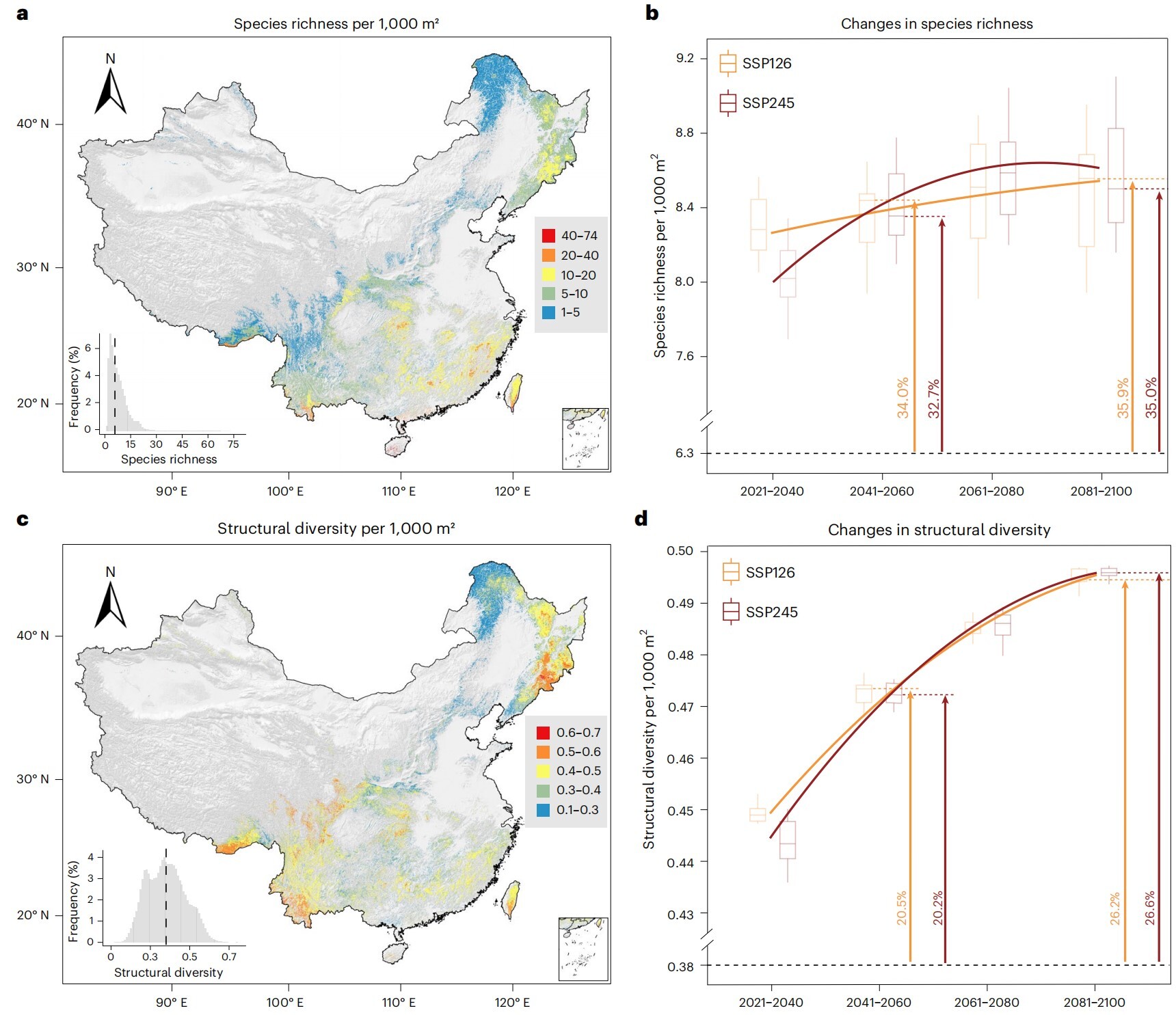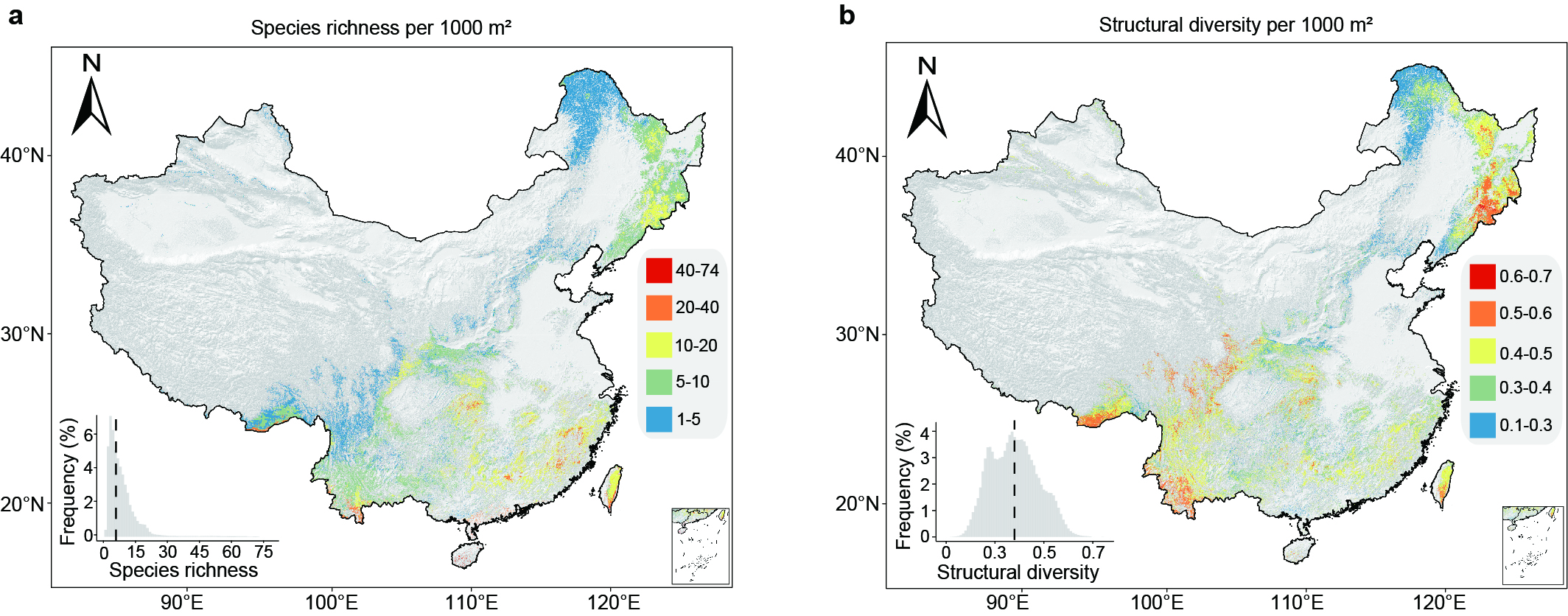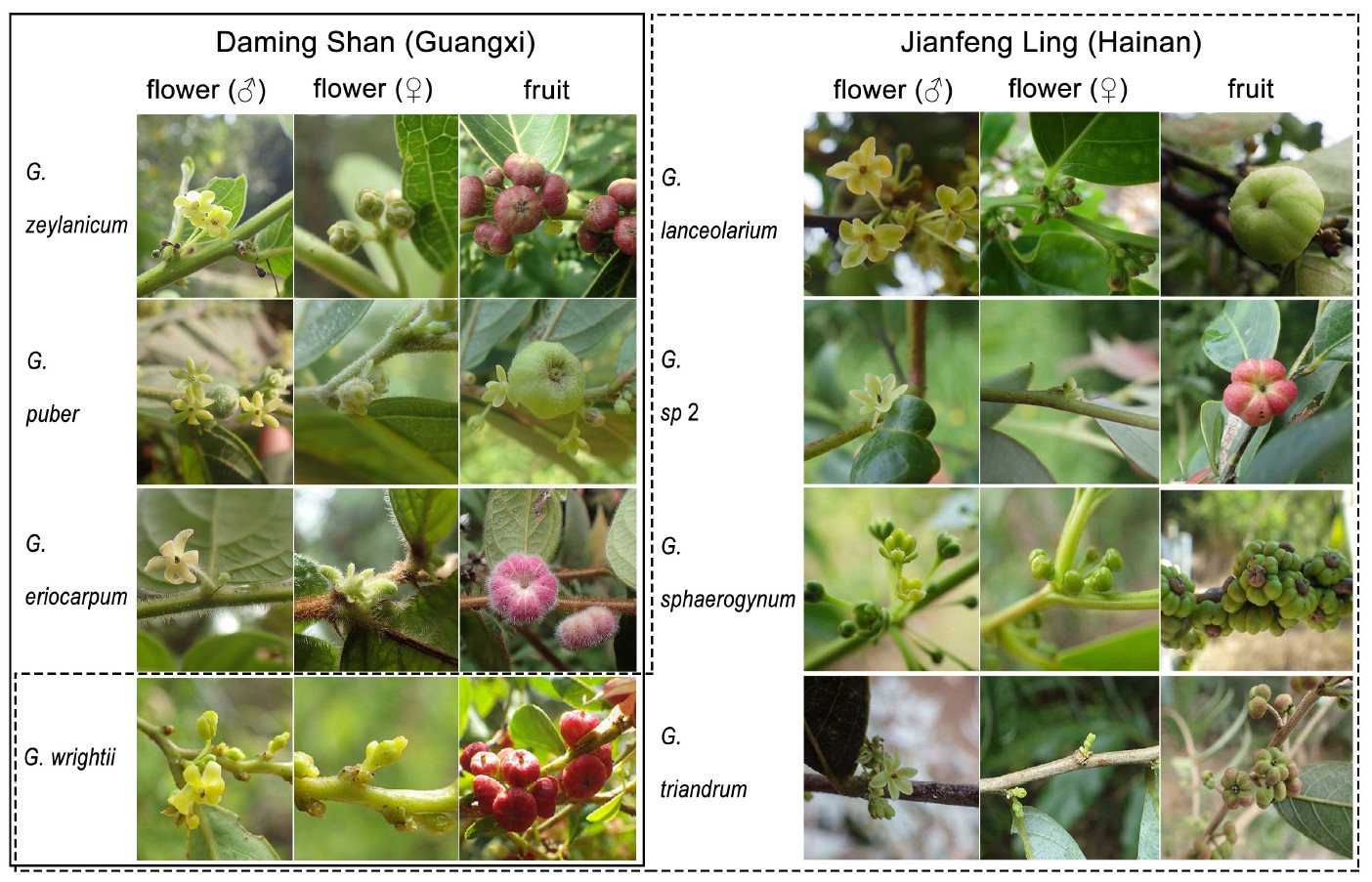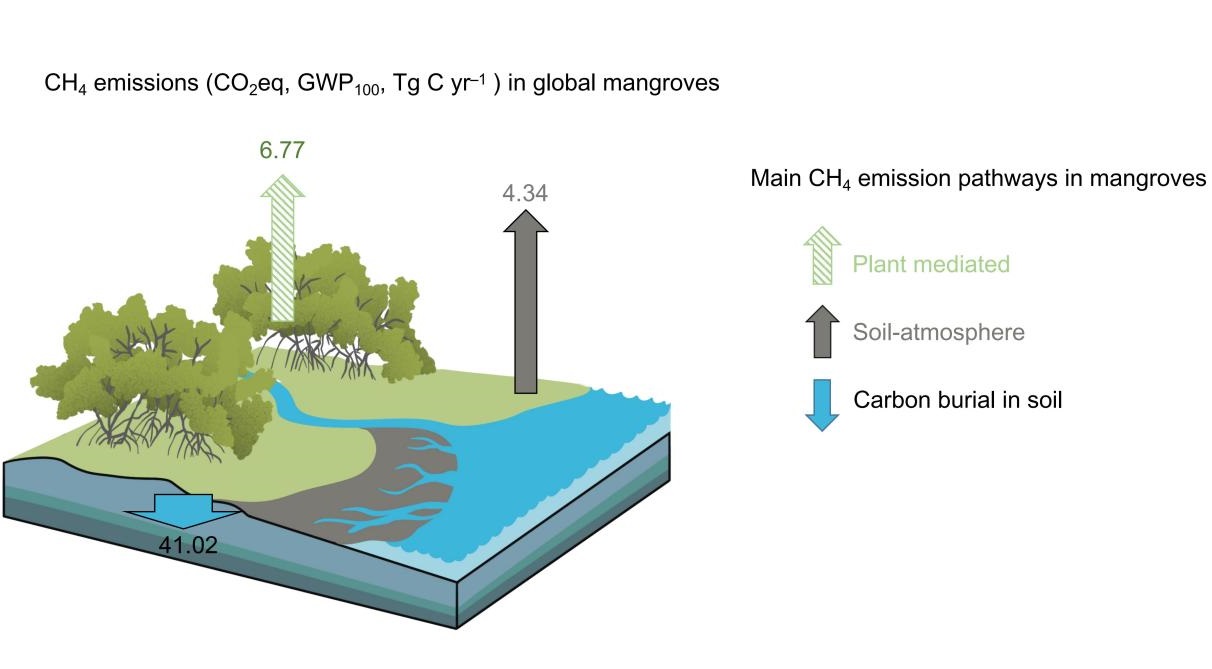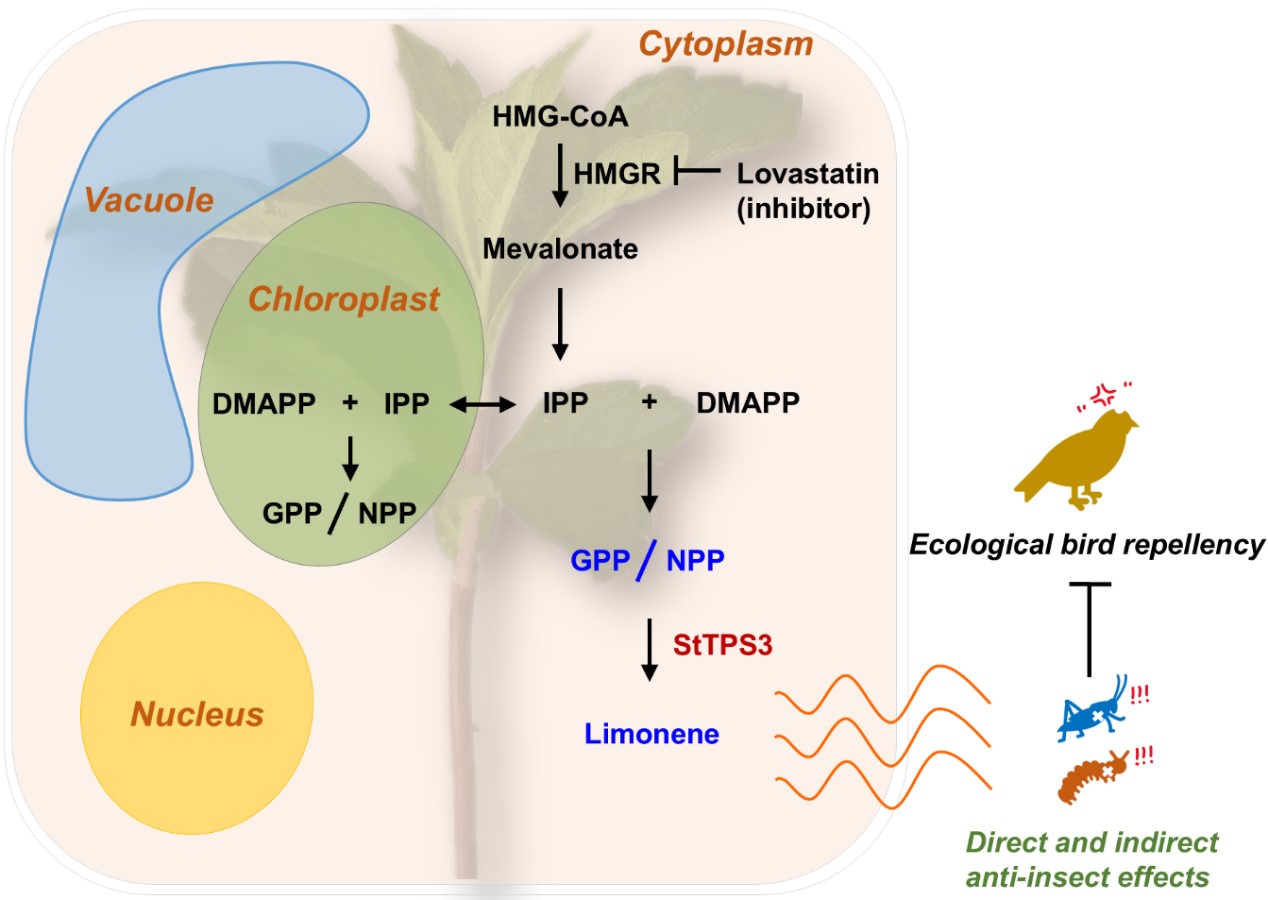News
-
2025-12-03【Xinhua News】Across China: Researchers release high-resolution maps of China's forest diversityAccording to the study, forest diversity comprises two key dimensions: tree species richness and structural diversity. Both play vital roles in supporting wildlife and enhancing carbon storage. The previous understanding of these patterns was limited by the absence of comprehensive, fine-scale forest inventory data at the national level.Read More
-
2025-11-28Researchers Unveil First High-Resolution Maps of China’s Forest Diversity PatternsUsing a spatially representative dataset of more than 300,000 trees from nearly 3,400 natural forest plots, this study provides the first comprehensive assessment of the fine-scale spatial patterns, drivers, and future potential of tree species richness and structural diversity across China’s natural forests. A research team led by the South China Botanical Garden of the Chinese Academy of Sciences, in collaboration with multiple domestic and international research institutions, has made progress in investigating forest diversity patterns across China. The findings were recently published in Nature Ecology & Evolution. Article Link: https://doi.org/1...Read More
-
2025-11-28Long-term observations reveal a new mechanism: Tropical forest soil carbon and phosphorus cycles are “drifting apart”Long-term nitrogen and phosphorus additions in a tropical coastal forest revealed a clear decoupling between soil carbon and phosphorus cycles: soil organic carbon concentrations, fractions, and chemistry remained unchanged, while phosphorus additions caused a strong accumulation of total and inorganic P—mainly within the POM fraction but not M... A research team from the South China Botanical Garden, Chinese Academy of Sciences, has recently made important progress in understanding how tropical forest soil carbon and phosphorus cycles respond to nutrient enrichment. The study shows that long-term phosphorus addition increased total soil phosphorus by more than threefold, yet did not enha...Read More
-
2025-11-17The mechanism for macroevolutionary persistence of obligate mutualismBrood pollination mutualisms are characterized by reciprocally specialized and modular network architecture and constitute evolutionary paradoxes. With a comparative study of obligate mutualism between leafflowers and leafflower moths across eight communities, this findings that some regional networks are nested in this system suggests a possibl... Highly intimate (symbiotic) mutualisms, such as brood pollination mutualisms, are characterized by reciprocally specialized and modular network architecture and constitute evolutionary paradoxes. This type of mutualism is particularly vulnerable to extinction, since reciprocally specialized and modular networks are usually locally species-poor a...Read More
-
2025-11-14Researchers Identify Mangrove Tree Stems as Previously Underestimated Methane Source Offsetting Blue Carbon BenefitsStem methane emission from mangroves can offset 17% blue C burial, highlights the need for comprehensive greenhouse gas accounting in blue carbon assessments. Mangrove ecosystems rank among the most efficient “blue carbon” systems on Earth, capable of absorbing and storing vast quantities of atmospheric carbon dioxide (CO₂). However, mangroves also release methane (CH₄), a potent greenhouse gas, potentially offsetting a portion of their climate mitigation benefits. While prior research has focused...Read More
-
2025-11-13New Study Reveals Microbial Network Restructuring Mitigates Long-Term Soil Carbon Emissions from WarmingA decade-long warming experiment in a subtropical forest reveals that soil microbial communities reorganize into more stable networks, enhancing carbon use efficiency and partially offsetting initial warming-induced carbon losses. Soils release approximately 40–60 petagrams (Pg) of carbon annually into the atmosphere through microbial metabolism. Climate warming is projected to further enhance soil microbial respiration, intensifying positive carbon–climate feedback loops. However, it remains unclear whether this feedback might weaken over several years.To address this ...Read More
-
2025-11-12New Study Identifies Key Anti-Insect Monoterpenes in Sphagneticola trilobata and Reveals Their Biosynthetic Originα-Phellandrene, limonene, and p-cymene are the main volatiles with anti-insect effects in S. trilobata.StTPS3 is localized in the cytoplasm and may use GPP and FPP to synthesize limonene. Planting Sphagneticola trilobata (L.) Pruski around airport runways is known to reduce insect density and bird activity, lowering the risk of bird strikes. Yet its insect-repelling mechanism and the biosynthesis of its active compounds have remained unclear.New study published in the Journal of Advanced Research, titled “Inhibitor treatment and...Read More
